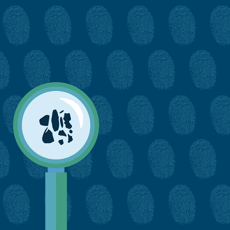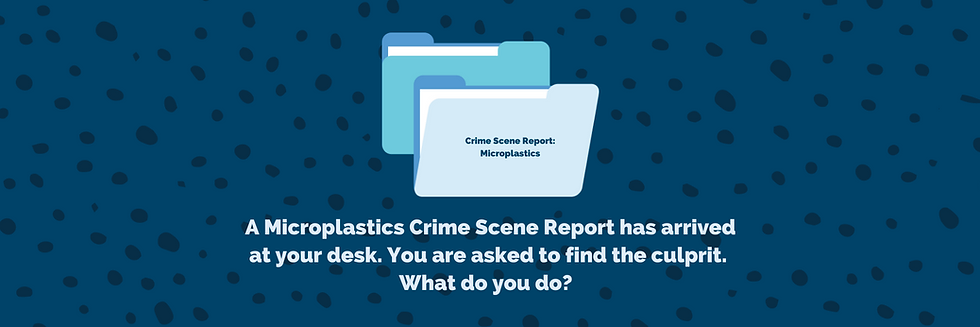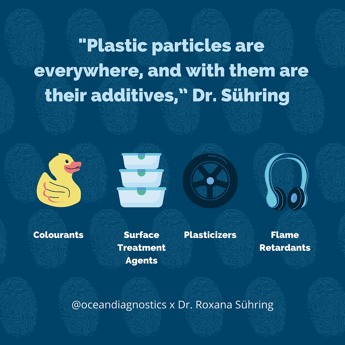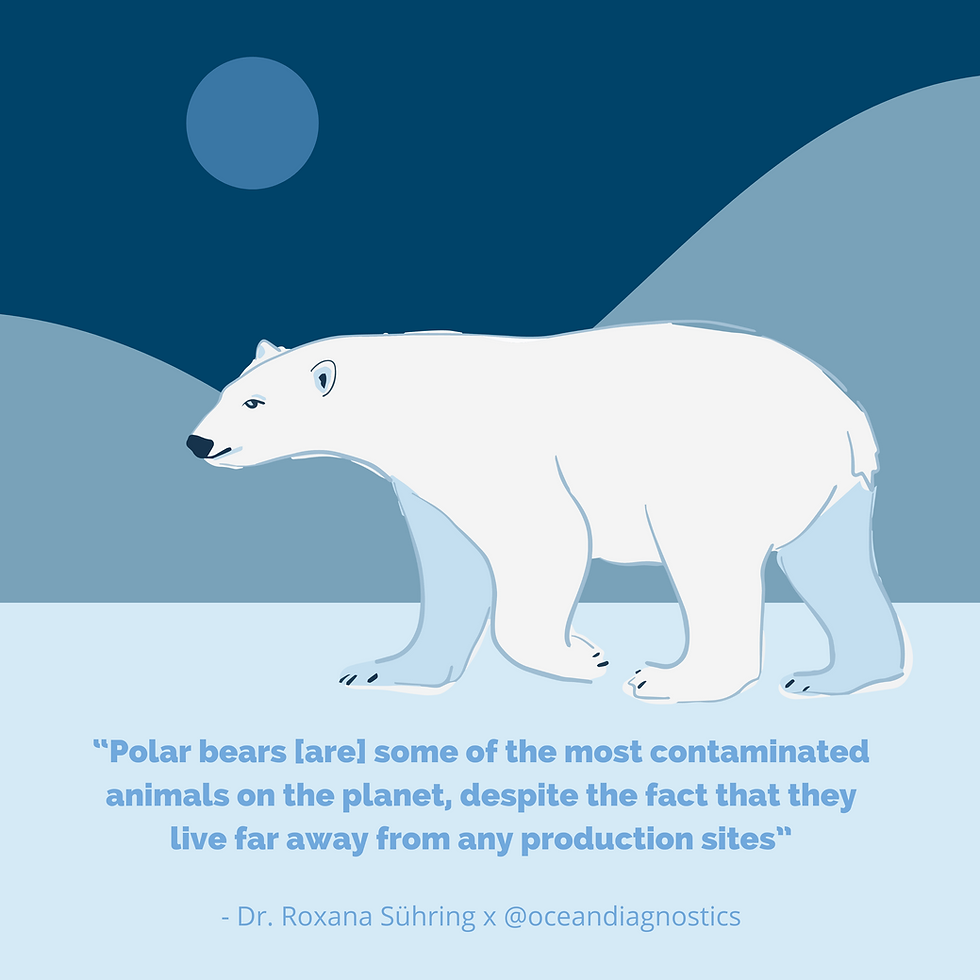Studying Microplastic Fingerprints to Determine Their Sources
Studying Microplastic Fingerprints To Determine Their Sources
Using environmental forensics Dr. Roxana Sühring explains plastic additives can generate “microplastic fingerprints”
Microplastics are plastic pieces 5 millimetres or less in size. Their small size and diversity in shape, colour, chemical compositions and more make it exceedingly difficult to determine where they come from, especially when they are found in our environment.
In some ways, they are the perfect crime, a puzzle that’s extremely difficult to solve. That is where microplastic expert, Dr. Roxana Sühring comes in.
We like to call Dr. Sühring a microplastic detective; just like in your favourite crime dramas, Dr. Sühring of Ryerson University uses clues to uncover the culprits of microplastic pollution. Culprits might be major contributors, like certain companies, or activities that become major sources of microplastic pollution.
 When presented with a microplastic crime scene, Dr. Sühring uses environmental forensics to determine where this pollution came from.
When presented with a microplastic crime scene, Dr. Sühring uses environmental forensics to determine where this pollution came from.
We use crime scene investigation as an analogy in this article, but Dr. Sühring argues that environmental forensics might not be that dissimilar to criminal investigations.
"One can argue, and many often do, that environmental pollution and pollution of specific communities can constitute a crime," Dr. Sühring
“One can argue, and many often do, that environmental pollution and pollution of specific communities can constitute a crime, but even if it isn’t something that will go to the criminal justice system and courts, a lot of the approaches that are being used to solve crimes involves finding out who did what...In terms of plastic pollution and the environment, one of the questions could be, where does this pollution come from?” explains Dr. Sühring.
Dr. Sühring specializes in environmental forensics and works to “fingerprint” microplastics. Fingerprints are used in forensics to match a person to the crime. In microplastics research, Dr. Sühring uses the properties of microplastics to match plastic particles found in the environment to their source.
“That will allow us to figure out if there is something we can do to reduce those sources and emissions,” says Dr. Sühring.
Oh no! This just in...


Case File #1: The Scene & Informant’s Statement: [click to reveal the clue]
You need to get to the bottom of this, and time is running out.
Where do you start? Using Dr. Sühring's explanation of environmental forensics, we can solve this crime together. Click the links below for clues!
Find the Fingerprint
The microplastic fingerprint is found in the plastic additives, an “often overlooked” element of plastic contamination, explains Dr. Sühring.
"A plastic is not a plastic, not a plastic. Plastics themselves are a chemical mixture," Dr. Sühring.
“A plastic is not a plastic, not a plastic. Plastics themselves are a chemical mixture. They have the polymer, [the part] that makes up the plastic backbone essentially. But then, depending on how you want to use this plastic, different additivities need to be put into this product,” says Dr. Sühring.
Let’s run through some examples. Click the links to find out what might be in the fingerprint of the products below:
Plastic electronic equipment
Flame retardants may be included to ensure the plastic equipment does not catch fire when heating up.
Food container
Some plastic products have functional additives, including surface treatment. Products like food containers may have liquid and water resistant or stain resistant additives.
Children’s toy
Colourants may be used to get the desired colour.
Car tires
Dr. Sühring explains, “additives can be colourants, if you want a certain colour. They can be functional additives, if you want a certain function...” For example, when creating electronic equipment that can heat up and potentially burn, flame retardants, a functional additive, are often added to the plastic product.
Additives can also be plasticizers or surface treatments. “Some plasticizers are used to make plastic more squishy and easier to form. Or, there are different surface treatment agents to make the product more stain-resistant or water-resistant.” The list goes on, explains Dr. Sühring.

Their research attempts to answer whether certain additives are the smoking gun...
Dr. Sühring and her team look at additives in various products to see if certain additives always identify this type of product category. Their research attempts to answer whether certain additives are the smoking gun, always identifying this product category even if it later becomes a tiny microplastic particle in the environment.

Case File #2: The Smoking Gun [click to reveal the clue]
These tiny black particles contain an additive that is not often used. In fact, it is almost exclusively used only in one product group.
What do you do?
Tip: Contact environmental forensic expert, Dr. Sühring, for her insight.
Compare results in labs across the globe
Finding the plastic fingerprint isn’t easy; collaboration is key. Dr. Sühring works with collaborators across the globe, many of which are analytical chemists specializing in very specific areas.
Dr. Sühring’s background is in the analysis of plastic additives in the environment. She uses high-resolution mass spectrometry, which means she analyzes how light is absorbed in the matter to determine what the matter is. She specifically looks at plastic additives that dissolve in water.
Dr. Sühring explains the technique: “we are leaching different plastic products. We are doing different weathering experiments to see if something leaches more, or if different things leach out. If you have, for example, light, or saltwater versus freshwater, or if it is shaken versus standing still, we have different conditions, and we analyze the leaching in different conditions.”
“Since we want to identify patterns, we may not look at everything [leached] in there, but we try to get the big picture, what pattern is unique to this product..." Dr. Sühring.
“Since we want to identify patterns, we may not look at everything [leached] in there, but we try to get the big picture, what pattern is unique to this product, since we know what the product is [in these experiments],” relays Dr. Sühring.
“All of our partners are working on subsamples of the same [plastic] products and they are analyzing it with different techniques.” Dr. Sühring notes why collaboration is key.
In the United Kingdom, project collaborators apply heat to the same plastic particles and analyze the substances that remain.
In Germany, a team investigates trace metal contaminants on different plastic products. Trace metals include elements such as copper, iron and zinc, all of which can be found in small quantities in the environment. These metals may attach to plastic particles and provide clues to where they came from.
Another collaborator in Germany looks at stable isotope patterns off the material found on top of or covering the plastics to see if the plastic has been in wastewater treatment plants or in the river, for example.
You’ve probably noticed plastic develop a film of algae when exposed to water for a long time; you see this on the bottom of docks and buoys. Stable isotopes can be oxygen, carbon, hydrogen and more. They are common elements we find in our environment and are stable because they are not radioactive. Analyzing these elements shows researchers which environment these plastics originated from.
All the collaborators send their information to a forensic expert in Calgary who applies machine-learning techniques to determine the “smoking gun” of different plastic product groups. The properties give the teams the right clues to determine the source of these microplastics.
Dr. Sühring aspires for even more collaboration in the future. “We want to take this further and really make it a collaborative approach, bringing in more and more partners,” she explains. “We already have additional partners who have offered to send us data on leaching information which they have collected from different plastic products. We can integrate this information into a growing library for plastic product fingerprints.”

Case File #3: Collaborators Confirm Smoking Gun [click to reveal the clue]
The forensic expert team explains that the chemical you found in the black particles is 6PPD quinone, an additive almost exclusively used in car tires.
Examine the scene
Through community science, individuals can provide a ton of information to environmental forensic scientists!
Dr. Sühring explains that many of her samples came from community scientists. “We’ve had amazing volunteers who are community scientists. It's been absolutely amazing,” she explains.
“Community science is so useful. As a local person, you know what type of plastic products you are seeing," Dr. Sühring.
“Community science is so useful. As a local person, you know what type of plastic products you are seeing. Very often, people have a good hunch where this [plastic pollution] is coming from, especially if they have been living there for a while.”

Case File #4: Case Closed [click to reveal the clue]
You chat with the neighbours in your local area and with other community scientists who are keen to solve this puzzle. Those living in your town explain that a highway was recently built next to your neighbourhood and traffic has been increasing steadily. After chatting with the local community and other environmental forensic experts, you determine the particles to be tire dust. Case closed!
...Or is it?
To help solve more, real-time, real-life microplastic mysteries, Follow Dr. Sühring on Twitter or ask how you can get involved.
Becoming a community scientist is one way to take action today!
Dr. Sühring notes that even if particles are too small to analyze looking at additives can be a tracer.
“When you go into the nano-range all sorts of analytical problems can happen.” Dr. Sühring’s lab also looks at how plastics can be transport pathways for certain chemicals into remote regions.
They uncovered a certain additive (often used in flame retardants, plasticizers and floor polishes) that is present in the muscle tissue of arctic seabirds and in the environment around their colonies. They realized that finding these chemicals in the seabird tissue is a good indication of how much plastic the birds ingest.
“Plastic particles are everywhere, and with them are their additives,” says Dr. Sühring. “At a population level, we see the impacts.”
Dr. Sühring explains that there are risks to ingesting these chemicals. For example, certain additives have been linked to cognitive development issues, whereas other additives have been linked to chronic health conditions. “Plastic particles are everywhere, and with them are their additives,” says Dr. Sühring. “At a population level, we see the impacts.
Surprisingly, there are a lot of additives, particularly in the north. Dr. Sühring explains that rivers flowing north can transport plastic and its associated chemicals. Plastic in mid-latitude ranges can evaporate and settle in the north, as well. Unfortunately, this has both equity and environmental implications.
“Inuit communities particularly have some of the highest [contaminant] concentrations in all of Canada. At that point, it can have health impacts.” Dr. Sühring is concerned and involved in the displacement of chemicals in the north and how plastic plays a role.
“Polar bears are some of the most contaminated animals on the planet, despite the fact that they live far away from any production sites,” explains Dr. Sühring.

How can individuals make a difference right now?
In addition to community science, another way to help is to not use plastic as a default. “We have so many good alternatives that are better for the environment.” Dr. Sühring asks individuals to especially avoid single-use plastics.
Plastic bags are still a huge problem. Plastic bottles contain microplastics particles, as well. She explains that having a reusable glass bottle, when possible, is better.
“When you heat it up, you drive plastic additives out of the plastic, and it wants to go somewhere. It will go into your food,” Dr. Sühring.
Dr. Sühring reminds us that consumers hold so much power, and she urges us not to heat our food in a plastic container. “When you heat it up, you drive plastic additives out of the plastic, and it wants to go somewhere. It will go into your food.
Interested in Dr. Sühring’s work? Follow her on Twitter where she often posts updates and looks for volunteers! You’ll contribute to solving a microplastic crime before you know it!
There is so much to learn about microplastic pollution. Community science is one way to connect to the problem. We've put together a page with information on microplastic pollution and how you can get involved. Check it out!
If you want to hear more from experts like Dr. Sühring, subscribe to our newsletter so you don't miss a "beat" of our #BeatPlasticPollution campaign!
Ocean Diagnostics Inc is an environmental impact company that develops technologies and laboratory capabilities to standardize microplastics data collection and analysis. The company works closely with academic and government partners to advance microplastic science. ODI has partnered with Environment and Climate Change Canada to share information on plastic pollution from Canadian plastic experts. Learn more here.
Follow #BeatPlasticPollution for the latest news.
